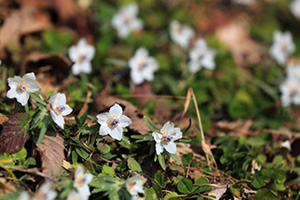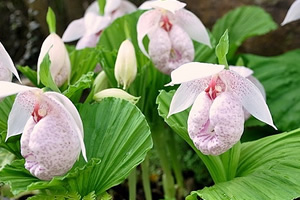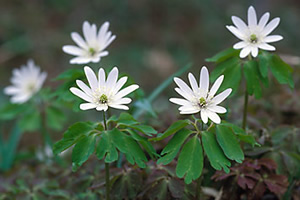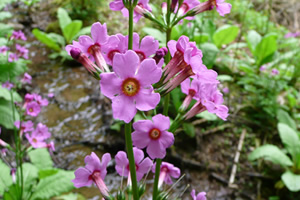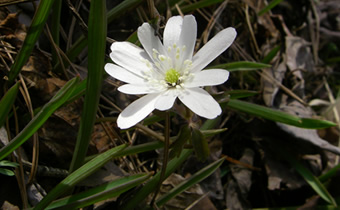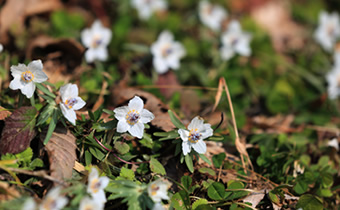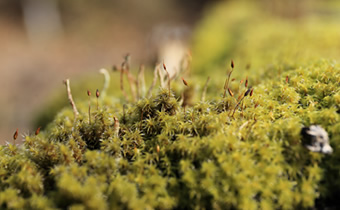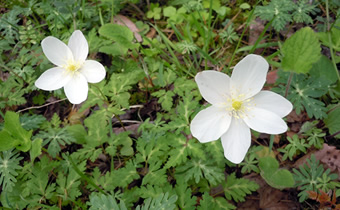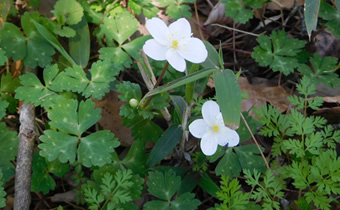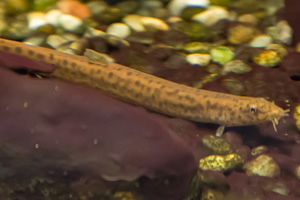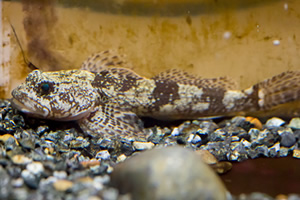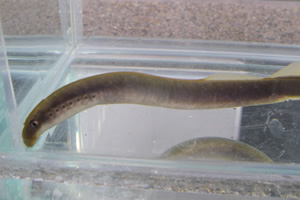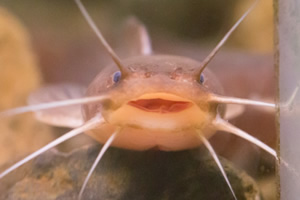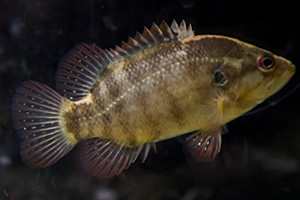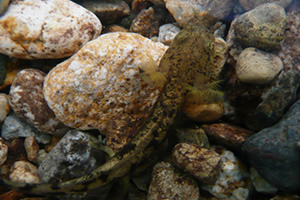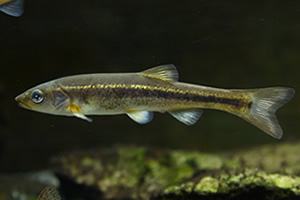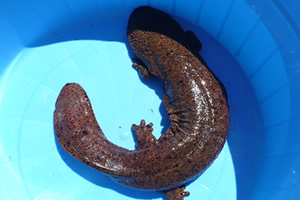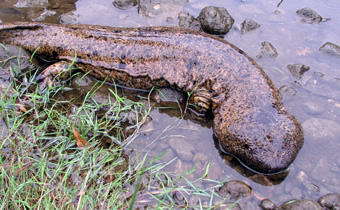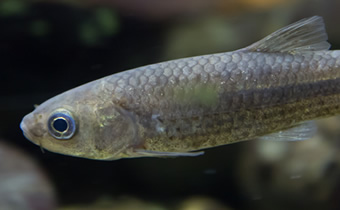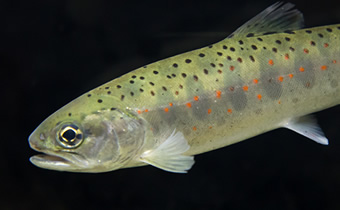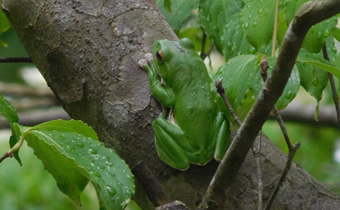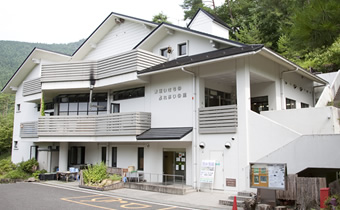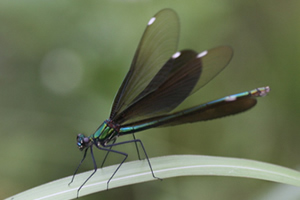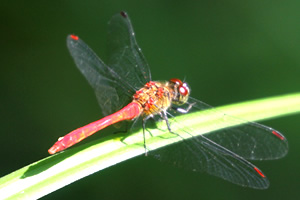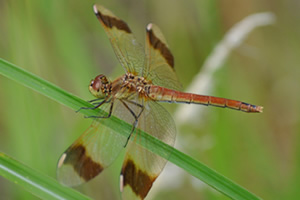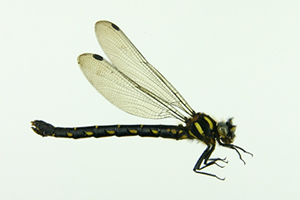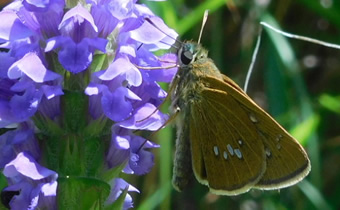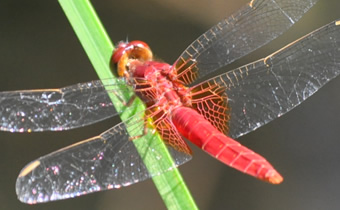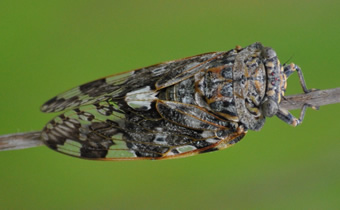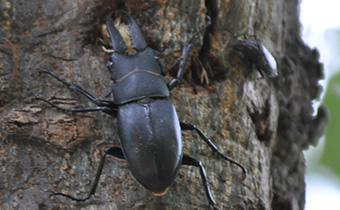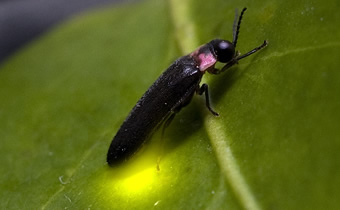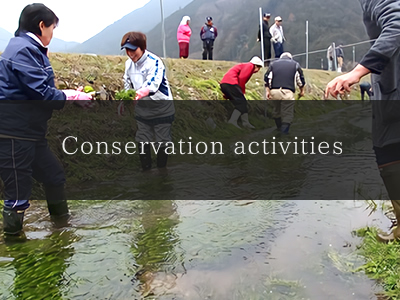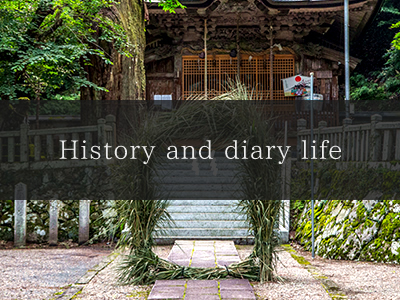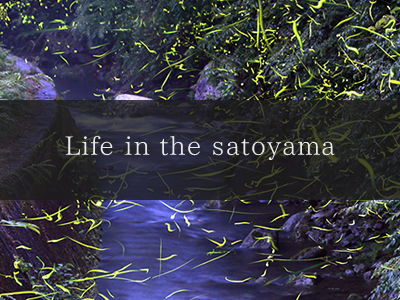What are designated important Satochi and Satoyama?
Life in the satoyama
Special flora and fauna live and grow in the Satochi and Satoyama, including emergence of Hotaria parvula and Luciola cruciata from May to June, Eranthis pinnatifida from February to March, Anemone raddeana from March to May, and Cypripedium japonicum and Anemone nikoensis from April to May.
In the Tozaka river mountain streams, you will find giant salamanders that are a a species of animal designated for special protection.
- Plants
Rare flowering plants that have adapted to cool climates grow here, and you can see the Eranthis pinnatifida and Anemone flaccida in full bloom from February to March, Anemone raddeana from March to May, Cypripedium japonicum and Anemone nikoensis from April to May, and Primula japonica from April to June.
Although some species have gone extinct and others are dwindling in number due to planting of cedar and cypress, regional development, and overgrowth of exotic species, the local people have begun to halt the decrease with active conservation activities.
Also, while there are natural water oak forests in places such as the foot of the Awaga mountains and rich vegetation is spreading over the mountains, the water retention capacity of mountains that were artificially forested with cypress and cedar trees is decreasing due to lack of maintenance with the recent decline in the forestry industry. Moreover, there is danger of natural disasters from typhoons and torrential rain, such as outflow of downed trees, landslides, and flash floods.
- Fishes and amphibians
Tozaka River that is the origin of the river system of the Kako River and the Imade River gorge are home to rare freshwater fish that prefer cool, high quality water, such as Biwa trouts, Japanese eight-barbel loaches, Asiatic brook lampreys, and Liobagrus reini.
There are also amphibians like Japanese giant salamanders and Hida salamanders.
There are very few Japanese giant salamanders left and they are a species of animal designated for special protection for Japan. The Japanese brown frog, Rhacophorus arboreus, Kajika frog, and newt populations are also decreasing, and the habitat needs to be improved and maintained in order to protect these species.
- Insects
Luciola cruciata, Luciola lateralis, Hotaria parvula, and Lucidina biplagiata live in the Tozaka area. At nighttime in May and June, emerging adult Luciola cruciata, Luciola lateralis, and Hotaria parvula fireflies can be seen flying around producing light.
There are many aquatic insects flowing down the Tozaka River and Imade River, and the rivers are full of dragonflies that live in the water in the larval stage. You can see many different species of adult dragonflies from April to November.
However, numbers of Calopteryx virgo, Sympetrum pedemontanum elatum, Nannophya pygmaea, Epiophlebia superstes, and other species of insects have dropped considerably.
There are also many cricket and grasshopper species on the bed of Tozaka River, banks of the fields, and grassy plains on the edges of the forests.
In contrast, the population of noisy crickets that were often seen many years ago has decreased dramatically, and they are designated Rank C in the Hyogo Prefecture Red Data Book. These and other species are coming to need protection.
『Aogaki Ikimono Fureai no Sato』
At the Aogaki Ikimono Fureani no Sato (115-6 Aogakicho Yamagai, Tamba City, Hyogo Prefecture), you can observe the main species of freshwater fish seen in Tamba City, Hyogo Prefecture, and learn about the connection between plants and daily life and about familiar wild birds and topographical characteristics.
The facility opened in 1995. By observing small creatures like wild birds and insects and plants in a familiar natural environment, visitors can learn about the importance of nature and our relationship with nature.
It is located on the skirt of the mountain overlooking the Saji River, which is the upper basin of the Kako River water system and the Saji River. It has a three storythree-story visitor’s center that contains permanent exhibits and study rooms, a 26 ha or so field with three walking trails, and a mixed forest where you can enjoy observing seasonal natural features.
The facility is used for a wide variety of purposes, from environmental education for elementary schools to residents’ group hands-on experience programs and observation meetings.

Facility exhibition information
In the freshwater fish rearing and display area, you can read information about the Saji River that is the source of the Kako River and see familiar fish that live in the Saji River on display. Aucha perch, oily bitterling, Japanese eight-barbel loach, and other precious species that are designated ‘living witnesses’ or of the Hikami Kairo are also reared there. The permanent display panels describe the distinctive flora and fauna you can see in the area, the plants that have been used in daily life, information on climate and terrain, and an overview of the Hikami Kairo. For the different seasons there are also special exhibitions about the wild field and mountain plants (spring and fall), exhibitions about the blessings of nature (spring and fall), exhibitions about the freshwater fish, and vine craft exhibitions.

Walking trail through mixed forest

In the mixed forest adjacent to the facility, there are walking trails. This area used to be an essential satoyama for living at the foot of the mountain, and now you can see all types of plant life. There are wooden labels along the trail, so you can enjoy learning about the distinctive plants that decorated the satoyama each season from the flowers of early spring with snow left over from winter to the fruit and nuts of late fall and the colored leaves of fall.
At the entrance to the visitor’s center that is also the entrance to the walking trail, there are descriptions of the flowers, fruit, and nuts you can see that month. From around March to July, you can see a relay of distinctive satoyama flowers in the mixed forest. The Prunus incisa that bloom around mid-March are small cherry blossoms blooming earlier than other varieties of cherry blossom and are rare even in the area. In this mixed forest, they are located in places that are easy to see from the walking trail.
Hands-on nature experience events
Each season, hands-on nature experience events are held in the mixed forest and river near the facility.
Every year, the facility plans events for experiencing the seasonal surroundings such as small forest observation meetings, river exploration, insect classes, bird watching, and star gazing. Many visitors including parents with children and older men and women come back again and again.
It is also used as an environmental education program for schools for learning about the familiar Tamba nature and satoyama lifestyles and is used by elementary schools for environmental learning.
The facility is available for use by elementary schools in not only the local Tamba area, but also in more distant places in the Kyoto‐Osaka‐Kobe area.
Staff are sometimes sent to elementary schools or local areas to offer classes to support environmental education.
There are various programs for local residents to participate and experience the nature and culture of the satoyama, including different types of observation meetings and workshops that are held together with the facility and events that are fun for children.

Activities of the Aogaki Ikimono Fureai no Sato Friendship Association
A Friendship Association is run for fans of the Aogaki Ikimono no Fureai no Sato and others.






